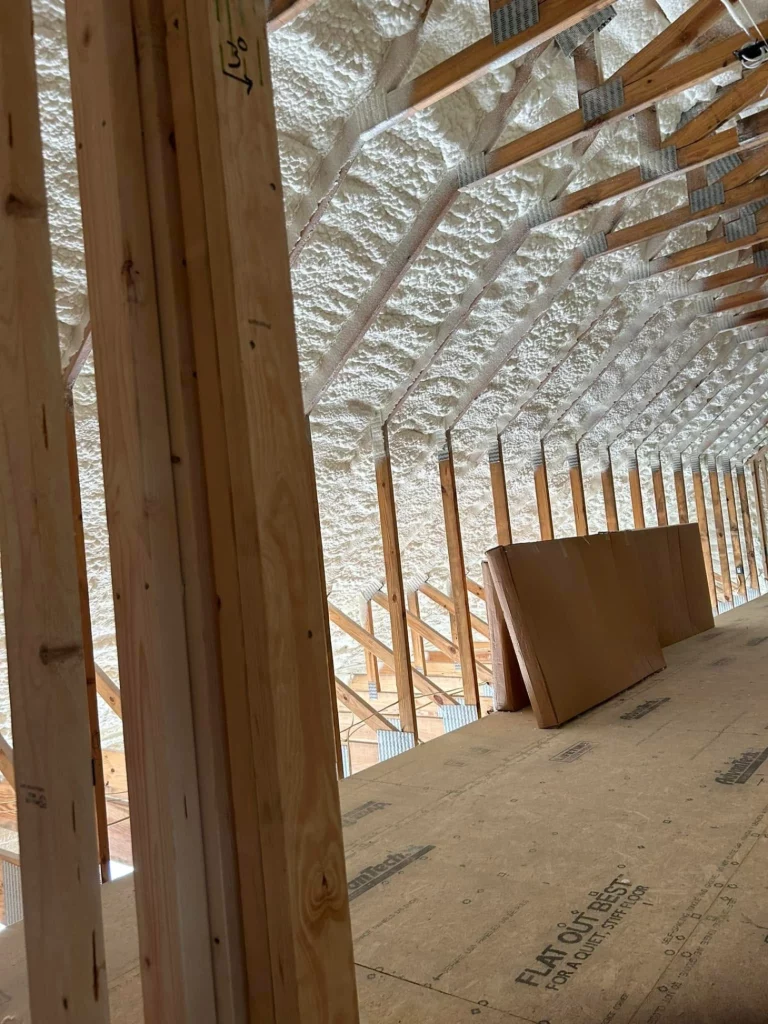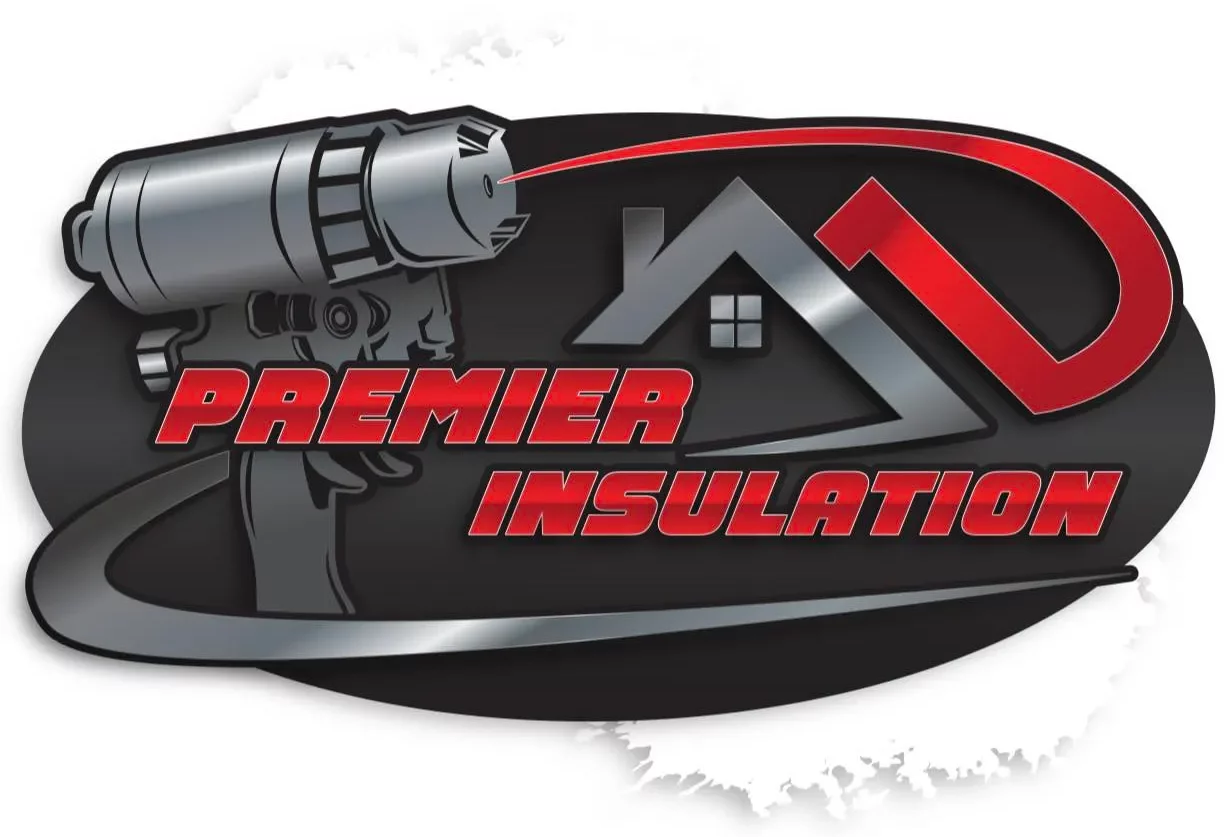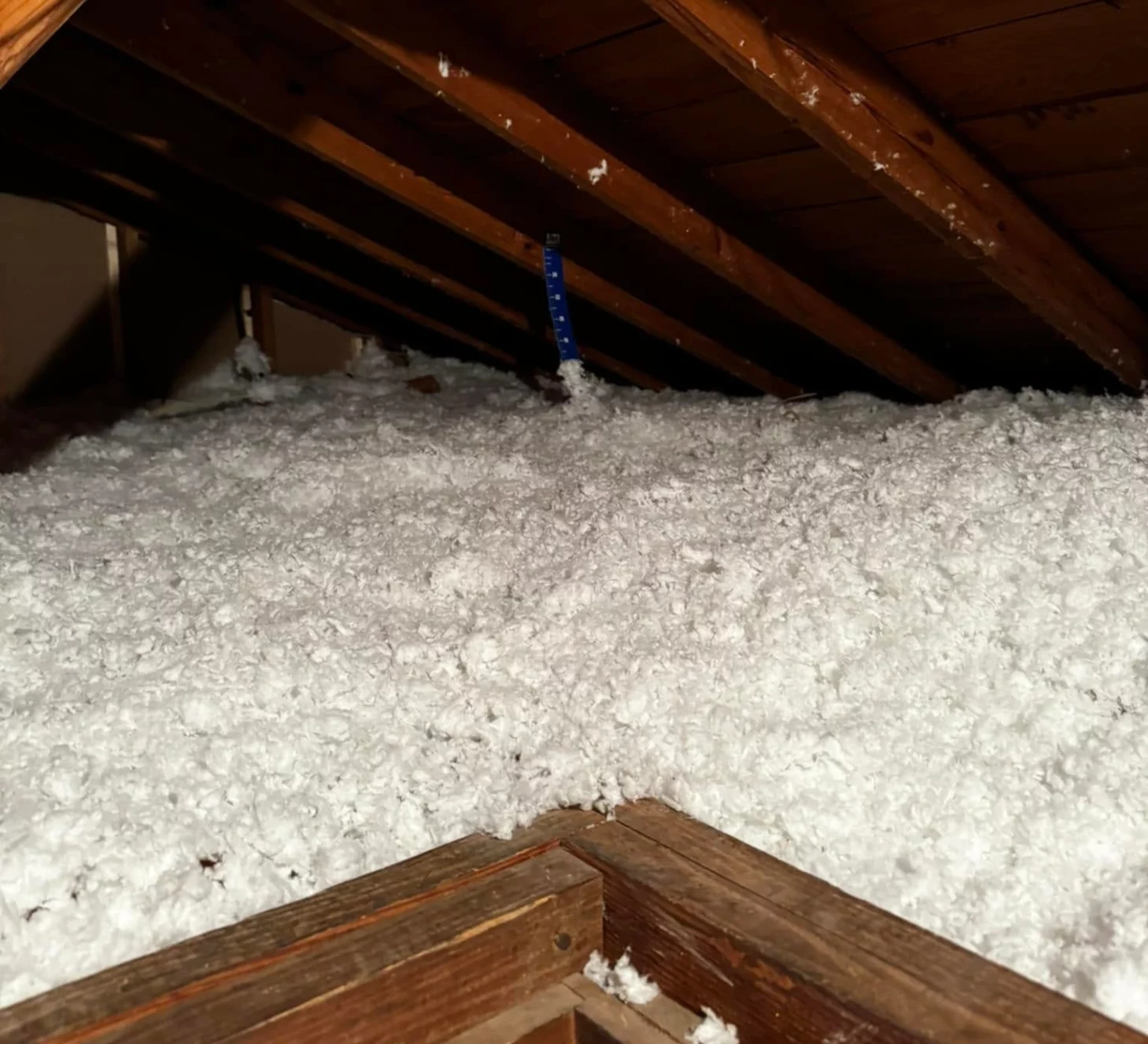The most critical areas requiring immediate insulation attention are your attic, basement or crawl space, and exterior walls, in that order. Heat rises naturally, making your attic the primary source of energy loss accounting for up to 25% of total heat transfer in poorly insulated homes. The basement and crawl space follow as secondary priorities since ground contact creates consistent temperature differentials year-round.
Premier Insulation GA has observed through extensive field experience that homeowners who address these three zones systematically achieve 30-40% greater energy efficiency improvements compared to random insulation upgrades. This strategic approach maximizes return on investment while creating the most comfortable living environment.
Understanding Heat Transfer Patterns in Your Home
Heat moves through your home via three primary mechanisms: conduction through solid materials, convection through air movement, and radiation from warm surfaces to cool ones. The stack effect drives warm air upward during winter months, creating negative pressure in lower levels that pulls cold air through gaps and poorly insulated areas.
Your home’s thermal envelope consists of all surfaces separating conditioned indoor space from unconditioned areas. Identifying weak points in this envelope determines insulation priorities. Areas with the greatest temperature differentials between indoor and outdoor conditions require immediate attention.
Bonus Tip: Use a simple hand test during extreme weather—hold your hand near potential problem areas like electrical outlets, windows, and baseboards. Noticeable air movement or temperature changes indicate insulation deficiencies requiring immediate correction.
Priority Zone Analysis
| Area | Heat Loss Percentage | Insulation Priority | Typical R-Value Needed | Installation Complexity |
|---|---|---|---|---|
| Attic | 25-30% | Highest | R-38 to R-60 | Low to Moderate |
| Basement/Crawl Space | 15-20% | High | R-15 to R-21 | Moderate |
| Exterior Walls | 20-25% | High | R-13 to R-21 | High |
| Windows/Doors | 10-15% | Medium | Weatherstripping/Caulking | Low |
| Floors Over Unheated Areas | 8-12% | Medium | R-19 to R-25 | Moderate |
Attic Insulation Takes Precedence
Attic spaces experience the most extreme temperature variations throughout the year. Summer temperatures can exceed 130°F while winter conditions may drop below freezing. This wide temperature swing creates continuous thermal stress on your heating and cooling systems.
According to the Department of Energy’s residential energy consumption survey, homes with inadequate attic insulation consume 15-25% more energy annually compared to properly insulated structures. The payback period for attic insulation improvements typically ranges from 2-4 years in most climate zones.
Existing insulation levels often fall short of current energy codes. Many homes built before 1980 contain R-19 or less in attic spaces, significantly below today’s recommended R-38 to R-60 standards for optimal performance.
Basement and Crawl Space Considerations
Ground contact areas present unique insulation challenges due to moisture concerns and thermal bridging through foundation walls. Concrete and masonry materials conduct heat efficiently, creating continuous pathways for energy loss during both heating and cooling seasons.
The International Energy Conservation Code requires basement wall insulation in climate zones 4 and above, yet many existing homes lack adequate protection. Crawl spaces with exposed earth floors contribute additional moisture problems that compromise insulation effectiveness over time.
Bonus Tip: Address moisture issues before installing insulation in basement or crawl space areas. Persistent humidity above 60% can reduce insulation performance by up to 50% while promoting mold growth and structural damage.
Exterior Wall Assessment
Wall insulation evaluation requires more complex analysis since accessing these areas typically involves significant renovation work. Many homes constructed before modern energy codes contain minimal wall insulation, often just R-11 fiberglass batts in 2×4 framing.
Thermal bridging through wooden studs creates consistent weak points in wall insulation systems. Advanced insulation techniques like continuous exterior insulation or spray foam application can eliminate these thermal bridges while significantly improving overall performance.
Insulation Performance Data
| Insulation Type | R-Value per Inch | Moisture Resistance | Air Sealing Capability | Longevity Rating |
|---|---|---|---|---|
| Closed-Cell Spray Foam | 6.5-7.0 | Excellent | Excellent | 30+ years |
| Open-Cell Spray Foam | 3.5-4.0 | Good | Excellent | 30+ years |
| Blown-In Cellulose | 3.2-3.8 | Fair | Poor | 20-30 years |
| Fiberglass Batts | 3.1-3.4 | Poor | Poor | 15-25 years |
Climate-Specific Guidance for Georgia Homes
Georgia’s mixed humid climate presents specific challenges for home insulation systems. Summer cooling loads dominate energy consumption, with average temperatures exceeding 85°F for extended periods. High humidity levels throughout the year require careful vapor barrier placement and moisture management strategies.
The state’s climate zone 3A designation requires different insulation approaches compared to northern regions. Cooling-dominated climates benefit from reflective barriers and proper ventilation in addition to traditional thermal insulation materials.

Things to Consider Before Making Your Insulation Decision
Evaluate your home’s age and construction methods before selecting insulation priorities. Homes built before 1950 often lack modern vapor barriers and may require structural modifications to accommodate current insulation standards. Post-1980 construction typically includes basic insulation that may need upgrading rather than complete replacement.
Budget allocation should follow the priority ranking system while considering long-term energy savings potential. Attic improvements provide the highest immediate return, making them ideal starting points for phased insulation projects. Complex wall insulation projects may require professional assessment to determine cost-effectiveness.
Existing ventilation systems need evaluation before adding insulation. Inadequate ventilation combined with increased insulation can create moisture problems leading to mold growth and structural damage. Mechanical ventilation may require upgrading to maintain healthy indoor air quality.
Premier Insulation GA’s Specialized Services
Residential Spray Foam Insulation: Complete thermal envelope sealing using advanced spray foam technology that eliminates air leaks while providing superior insulation performance in critical areas like attics and crawl spaces.
Crawl Space Encapsulation: Comprehensive moisture control and insulation system that transforms problematic crawl spaces into clean, dry storage areas while improving overall home energy efficiency.
Insulation Removal: Safe extraction of damaged or ineffective existing insulation materials, preparing spaces for modern high-performance insulation systems.
Air Sealing Services: Professional identification and elimination of air leaks throughout your home’s thermal envelope, maximizing insulation effectiveness and indoor comfort levels.
Common Questions About Home Insulation Priorities
Should I insulate my entire home at once or focus on one area first?
Focus on one priority area at a time, starting with your attic. This approach allows you to see immediate results and energy savings that can help fund the next phase. Most homeowners notice a 15-20% reduction in energy bills after completing attic insulation alone. Sequential improvements also let you evaluate each upgrade’s effectiveness before moving to the next area.
How do I know if my current insulation is working properly?
Check for temperature inconsistencies between rooms, drafts near outlets and baseboards, and unusually high energy bills compared to similar homes in your neighborhood. Ice dams on your roof during winter or excessive attic heat in summer indicate poor attic insulation. Moisture issues in basements or crawl spaces often signal inadequate insulation combined with air leaks.
What’s the difference between R-value requirements for different areas of my home?
R-value requirements vary based on each area’s exposure to temperature extremes and heat transfer patterns. Attics need R-38 to R-60 because they experience the greatest temperature swings. Basement walls typically require R-15 to R-21 due to ground contact moderating temperatures. Exterior walls need R-13 to R-21 depending on your climate zone and wall construction type.
Can I improve my home’s insulation during any season?
Spring and fall provide optimal conditions for most insulation projects due to moderate temperatures and lower humidity. Summer attic work requires early morning scheduling to avoid dangerous heat exposure. Winter installations may face material handling challenges but remain feasible for most areas except extreme weather periods. Planning ahead ensures contractor availability during preferred seasons.
How long should I expect my insulation upgrade to last before needing replacement?
Modern spray foam insulation maintains performance for 30+ years when properly installed. Blown-in cellulose typically lasts 20-30 years before settling reduces effectiveness. Fiberglass batts may need replacement after 15-25 years, especially in moisture-prone areas. Regular inspection every 5-7 years helps identify early signs of deterioration or pest damage requiring attention.
Key Takeaways for Your Home Insulation Strategy
Focus your initial efforts on attic improvements to capture the most significant energy savings potential in your home. This approach provides immediate comfort benefits while generating energy cost reductions that fund subsequent insulation projects in basement and wall areas.
Evaluate your home’s specific construction characteristics and existing insulation levels before making final decisions. Professional assessment helps identify hidden problems that could compromise insulation performance or create moisture issues over time.
Get Professional Insulation Assessment and Installation
Determining optimal insulation priorities requires comprehensive evaluation of your home’s unique characteristics and energy performance patterns. Premier Insulation GA provides detailed thermal assessments that identify specific areas requiring immediate attention while developing cost-effective improvement strategies.
Our experienced team evaluates existing insulation conditions, identifies air leakage patterns, and recommends targeted solutions that maximize energy savings within your budget parameters. Contact Premier Insulation GA at (229) 554-3939 to schedule your comprehensive home insulation assessment and start reducing energy costs immediately.
FAQS
Which insulation upgrade provides the fastest payback period?
Attic insulation improvements typically provide payback periods between 2-4 years due to significant heat loss reduction. The combination of lower material costs and straightforward installation makes attic projects the most cost-effective starting point for energy efficiency improvements.
Should I address air leaks before adding new insulation?
Air sealing must precede insulation installation for optimal performance. Unsealed gaps allow conditioned air to bypass insulation materials, reducing effectiveness by up to 40%. Professional air sealing identifies and eliminates leaks throughout your home’s thermal boundary.
How do I determine if my existing wall insulation needs replacement?
Wall insulation assessment requires professional evaluation using thermal imaging and moisture testing. Visible settling, water damage, or pest contamination indicates immediate replacement needs. Energy bills 20% higher than similar homes suggest inadequate wall insulation performance.
Can I improve insulation in stages without losing efficiency benefits?
Phased insulation improvements provide cumulative benefits when following priority rankings. Each completed zone contributes to overall efficiency gains while remaining areas continue operating at existing performance levels. Strategic phasing maximizes immediate comfort improvements within budget constraints.
What role does ventilation play in insulation effectiveness?
Proper ventilation prevents moisture accumulation that compromises insulation performance over time. Balanced ventilation systems maintain healthy indoor air quality while allowing insulation materials to function at rated R-values. Inadequate ventilation can reduce insulation effectiveness by 30-50% in humid climates.


